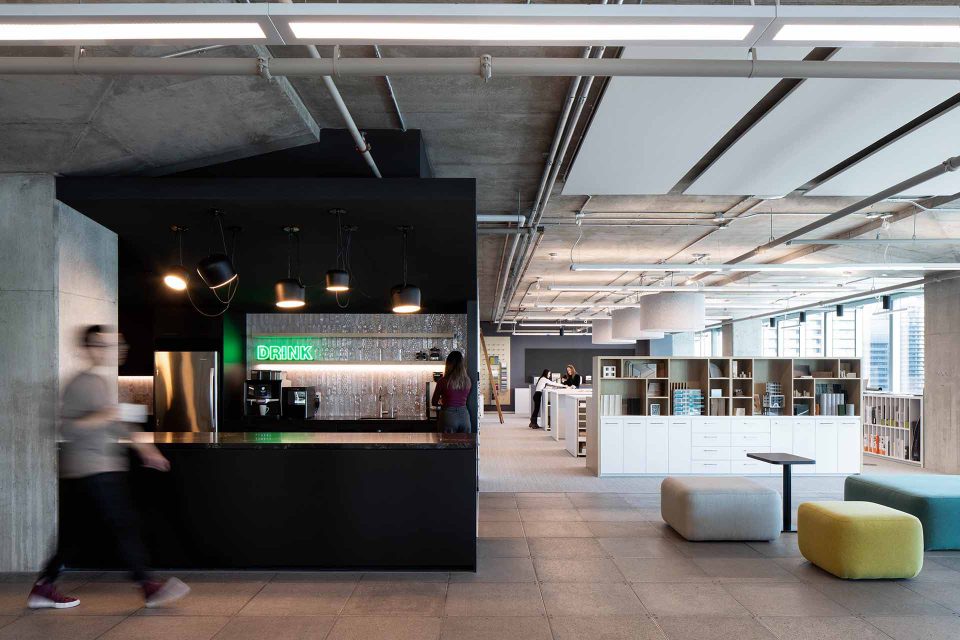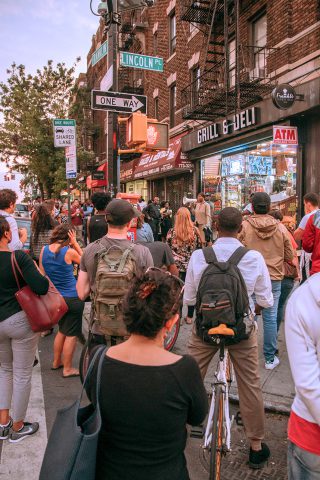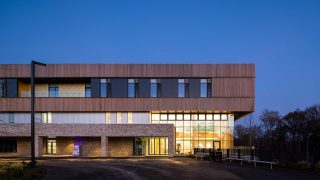← Archive home
Interior Designers, Andrea McCann and Caroline Robbie, describe the design of BDP’s own North American studio in downtown Toronto.
Working is different now, and yes, we know you are hearing that expression a lot these days. You’re probably overwhelmed by the volume of opinions, either good or bad, about remote working, productivity and presenteeism.
But we’re making the conscious decision to be open to the possibility of experimentation and discovery to find the best approaches for the new workplace. It’s OK if it’s messy and that we continue to take inspiration and learnings from history.
In 1939, Frank Lloyd Wright completed the SC Johnson Wax headquarters in Racine, Wisconsin – the workplace of the future with its cathedral-like open ‘workroom’. 25 years later, Herman Miller launched the Action Office line of workstation cubicles in 1964 – a radical departure from the private office and typing pools of the previous generation. Later in 1968, BDP opened its studio in Preston in the UK. The space was designed around “Bürolandschaft” – the office landscape principles developed by German brothers Eberhard and Wolfgang Schnell. The thinking prioritized informal, organically planned spaces that had been made possible by this new system of furniture.
“With the exception of the banking and legal professions who cling to hierarchical private offices, every current worker is part of the open office generation.”
All these watershed moments had profound impacts on workplace design. With the exception of the banking and legal professions who cling to hierarchical private offices, every current worker is part of the open office generation. Unfortunately, it seems that we lost the organic landscape essence in pursuit of maximum density. But, whatever direction we take now, the pandemic has led us to ask what benefit a magnificent workspace has without colleagues and peers?
“We have embraced uncertainty and recognize that the world of work has changed. As such, this new space might be the biggest shift in design since the invention of the open cubicle in1964.
In downtown Toronto, we have just completed what we un-humbly think is a magnificent North American studio for BDP in The Well; a space that delivers options for people – flexibility, choice and variety. In one corner of the office called the Oasis, employees can grab a book, lounge on a sofa or just stop to take in the sweeping views of Lake Ontario. In another they might find a dark space for deep focused work.
The two-storey studio is a destination workplace designed to reinforce and strengthen our culture and brand, promote wellness and accessibility, and leverage smart technologies to support comfort and innovation. It is an exercise in innovation, discovery and experimentation. Whether it’s neighbourhoods that serve as the main collaborative hubs in the studio, to a quiet nook overlooking the cityscape, the space has something for everyone. The clever use of character, lighting, views and structure create a range of spaces designed with flexibility, collaboration and wellness in mind. With space to grow into, apply and test our own learnings and adapt to change, the new studio really delivers on a “1 + 1 = 3” philosophy.
We have embraced uncertainty and recognize that the world of work has changed. As such, this new space might be the biggest shift in design since the invention of the open cubicle in1964. Providing spaces for three generations of workers to use together. We know that so much great thought comes from pausing and recharging and we wanted a space that employees would want to not only be in but also to stay in.
We are excited to be in this new space. We see it as a new benchmark for workplaces globally, setting a new standard for workplace interior design.











